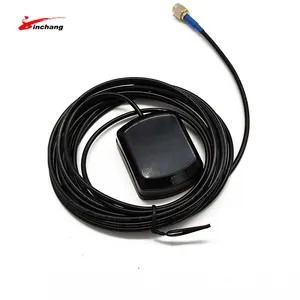Understanding Antenna Receivers
Antenna receivers are fundamental components in the realm of wireless communication, playing a crucial role in both sending and receiving signals. This category encompasses a variety of devices designed to operate with specific waveforms, which directly influence the transmission's range and stability. An antenna receiver is not a one-size-fits-all solution; rather, it is tailored to meet the requirements of different frequency bands and applications.
Types of Antenna Receivers
The spectrum of antenna receivers includes UHF Satcom antennas, VHF communication antennas, and HF radio antennas, each suited to particular uses. UHF Satcom antennas are geared towards line-of-sight and ground-reflected waves, making them suitable for TV, cellphone, and GPS applications. VHF antennas, with their lower frequency waves, offer extended range capabilities, albeit with potential line-of-sight blockages. HF antennas excel in long-distance communication, such as intercontinental transmissions, and are widely used in sectors like aviation and government operations.
Applications of Antenna Receivers
The application of antenna receivers spans various industries and technologies. High-frequency antennas are indispensable in aviation for reliable land-to-ground communication, especially over trans-oceanic distances. In the consumer space, UHF antennas are integral to broadcasting services and personal communication devices. The versatility of antenna receivers is evident in their widespread use across different communication platforms.
Features and Materials
Antenna receivers are characterized by their construction materials and design features, which are optimized for specific frequency ranges and environmental conditions. Materials such as aluminum, copper, and sometimes composites are selected for their conductive and durable properties. The design of an antenna receiver, including its length and shape, is meticulously engineered to capture the desired frequencies with maximum efficiency.
Advantages of Different Antenna Receivers
Each antenna receiver type offers distinct advantages. UHF antennas are prized for their proficiency in urban environments, while VHF antennas are favored for their broader coverage in less obstructed areas. HF antennas are the go-to choice for global communication networks due to their long-range capabilities. When selecting an antenna receiver, it is essential to consider these advantages in relation to the intended use.
Selecting the Right Antenna Receiver
On Alibaba.com, a diverse array of antenna receivers is available from international suppliers, each with unique features to cater to specific transmission needs. When choosing the right antenna receiver, it is important to assess the frequency requirements, intended application, and environmental factors. Alibaba.com serves as a marketplace to explore and compare these options, ensuring that buyers can find the appropriate antenna receiver for their communication demands.









































 浙公网安备 33010002000092号
浙公网安备 33010002000092号 浙B2-20120091-4
浙B2-20120091-4